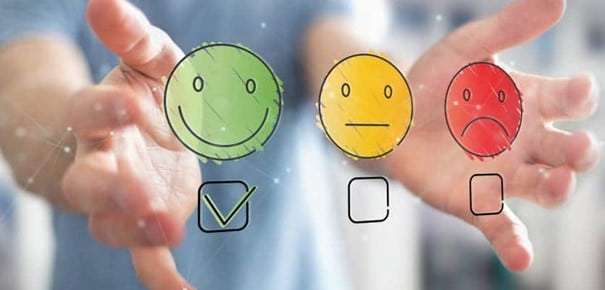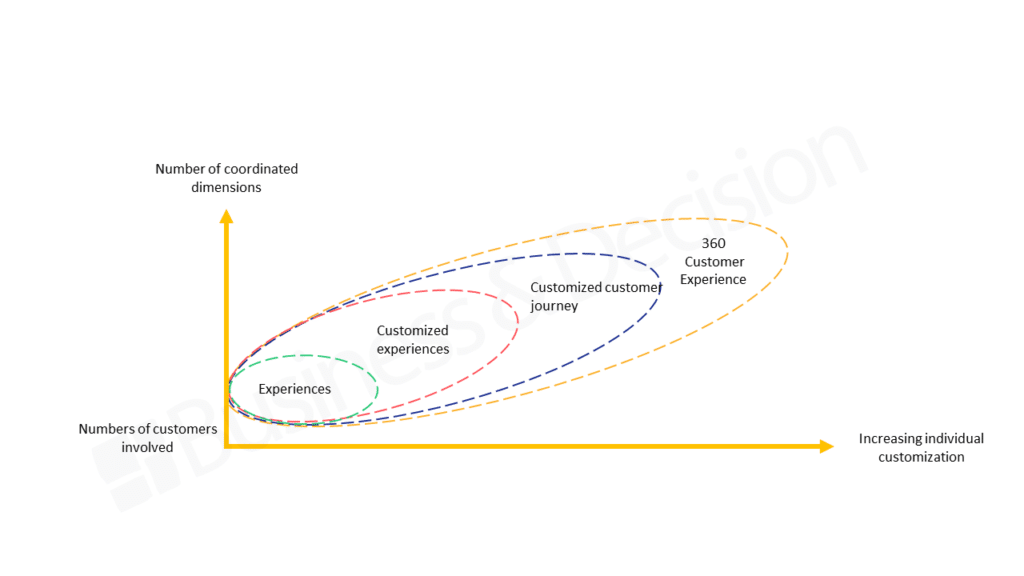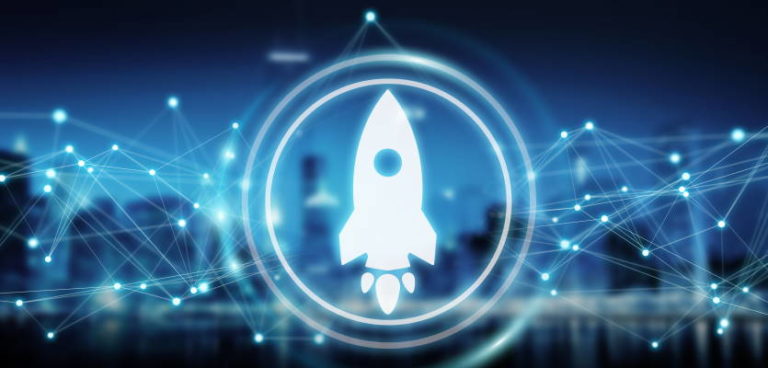Customer Experience has been at the forefront of marketing agencies’ and departments’ discourse for a number of years…and more importantly, a key enabler for the transformation of customer paths and companies’/administrative bodies’ internal processes and organisation.

When it comes to business, digital transformation’s reach can be so deep that it warrants the modification of business models (or at very least the development of new ones). Tom Goodwin, in his “Digital Darwinism” book, even posits that in the era of massive activity digitalisation, the transformation of business functions is the only issue that Management Committees should concern themselves with!
Customer Experience is, for many, a major umbrella theme that encompasses numerous aspects of almost all business functions.
First we shape our tools, then they forever shape us.
Marshall McLuhan
Customer Experience: defining the customisation level
A very interesting quote can be found on Tom Goodwin’s website: “First we shape our tools, then they forever shape us” (Marshall McLuhan). This is an interesting quote because it speaks to a reality often observed on the job: software package vocabulary, operation and limitations have a strong influence on users, managers and decision-makers.
In marketing/CRM for example, the simple word “lead” can have different meanings depending on the tools put in place. And to enable fundamental organisation-level change, we must ultimately succeed in changing the very meaning of words…and almost break habits.
Customer Experience is another one of those expressions, the meaning of which can vary significantly depending on who you are talking to and the situation you are in: and the difference is not only a matter of being offline or online, but also lies in the very level of customisation.
The 4 levels of Customer Experience customisation
This is why we propose to define several levels of Customer Experience, that are increasingly customised and integrate more and more engagement channels as you go up the scale.
- The 1st level includes all experience elements that are undifferentiated by customer, such as a shop’s design and atmosphere or the quality of the attractions or signposting in an amusement park.
- The 2nd level refers a light customisation of these experiences that does not require much effort at the beginning (greetings, notification, mail …). They can be individually improved and enriched, for example a hotel’s check-in/check-out process.
- 3rd level customer journey seeks to coordinate, simplify and optimise several experiences that form a coherent sequence: purchase journey, assistance journey (post-purchase)… The more distant the beginning from the end, the more ambitious the goal. This is where we tend to prefer the digital medium since, after all, it is the most malleable material.
- At the 4th level, we name 360° Customer Experience the ability to customise as many dimensions as possible of a broad customer journey: online/offline, direct/indirect

360 Customer Experience: the ultimate goal
This 4th level is of course the ultimate goal, the one that allows you to have the strongest impact and to really stand out in the market. In the face of such a complex task, it is highly understandable that major luxury retail brands are seeking to secure maximum control over their own distribution networks. It turns out then that the digital world and e-commerce are not such bad things for them since these allow them to build and maintain a direct relationship with customers…
It seems to us that one of businesses’ key ambitions today is to scale up this 4th level of customisation. During a recent presentation on current developments in the luxury sector, the Bain & Company firm pointed out that, in fact, products are no longer at the heart of discussions. It has almost become just one of the many levers used for building and fuelling interactions with the customer.
A Scalable Customer Experience: What does it mean?
But what does “large-scale” Customer Experience customisation really mean when all the studies are showing that customer segments are increasingly specific and small, that paths are more and more diverse but growth objectives are still extremely high?
Is it enough to add AI everywhere and let things happen? Not merely. On the one hand, lots of bias can creep in (even when using a powerful recommendation engine like YouTube). On the other, since consumers are controlling their data more and more, this does not always make it possible to properly populate AI/ML engines (see for example the new French start-up, Little Syster, offering a beta version of a mobile application that assesses other mobile applications).
Is it enough to provide a customer preference management page? Not only, since you have to know how to offer choices and respect them. Here is an example (real-life): a young opinion media offers a paid-content newsletter in addition to its free publications available on twitter, via an RSS feed and a free newsletter. The problem is that subscribing to the paid newsletter also automatically triggers the sending of the free newsletter and that there is no way to unsubscribe from it without interrupting the paid subscription! (see poor consent management).
Let’s take the example a little further. For this same opinion media, the RSS feed publishes the titles of all of their free and paid articles every day: each title links to the website giving access to the full article (the idea being of course to promote the site and content…). But if we have paid the subscription fee, shouldn’t we be able to access all of the articles directly in our RSS feed reader? (see publishing tool limitations).
So what does “large-scale” Customer Experience customisation really mean?
We believe that customised Customer Experience must be increasingly automated and that it must also be able to adapt automatically to customer choices, and their specifics, contexts and behaviours. This is what we call Responsive Customer Experience (Responsive CX).
To evolve into Responsive CX, each customer experience element must individually:
- Identify the customer and context
- Know the customer’s choices and given consents
- Adapt its format, content and process
- Offer A/B Testing type experimentation
- Allow progressive customer information collection
All together, they must also coordinate (align in real time) the following:
- The collection and sharing of customer choices, behaviours and information
- The collection and sharing of test results
Scaling up requires that Customer Experience automatically adapt to each customer: be responsive. In the weeks and months to come, we will analyse the principles and consequences of this new paradigm on this blog with the help of our partners, experts and feedback.
















Your email address is only used by Business & Decision, the controller, to process your request and to send any Business & Decision communication related to your request only. Learn more about managing your data and your rights.